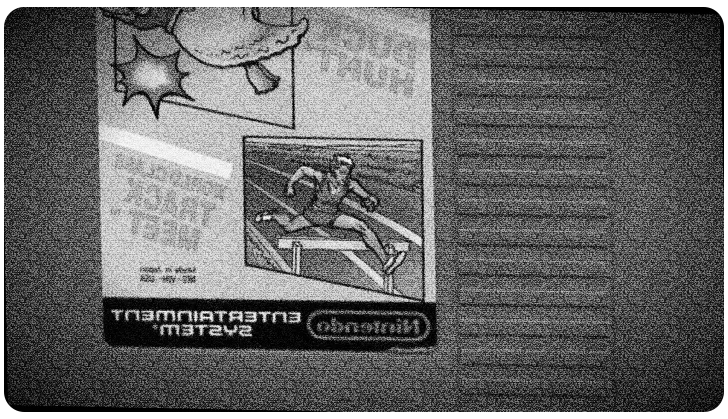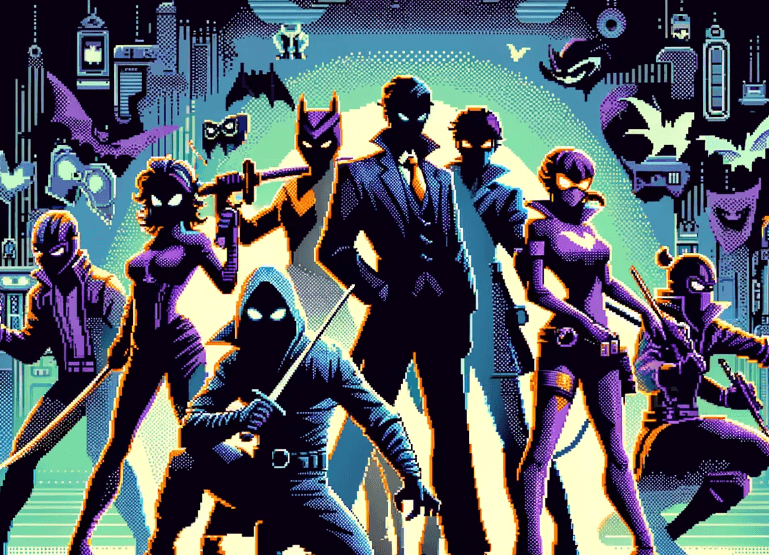 You go by “anonymous-villain” on the docket. For the record, and for posterity, what name will you accept for this conversation?
You go by “anonymous-villain” on the docket. For the record, and for posterity, what name will you accept for this conversation?
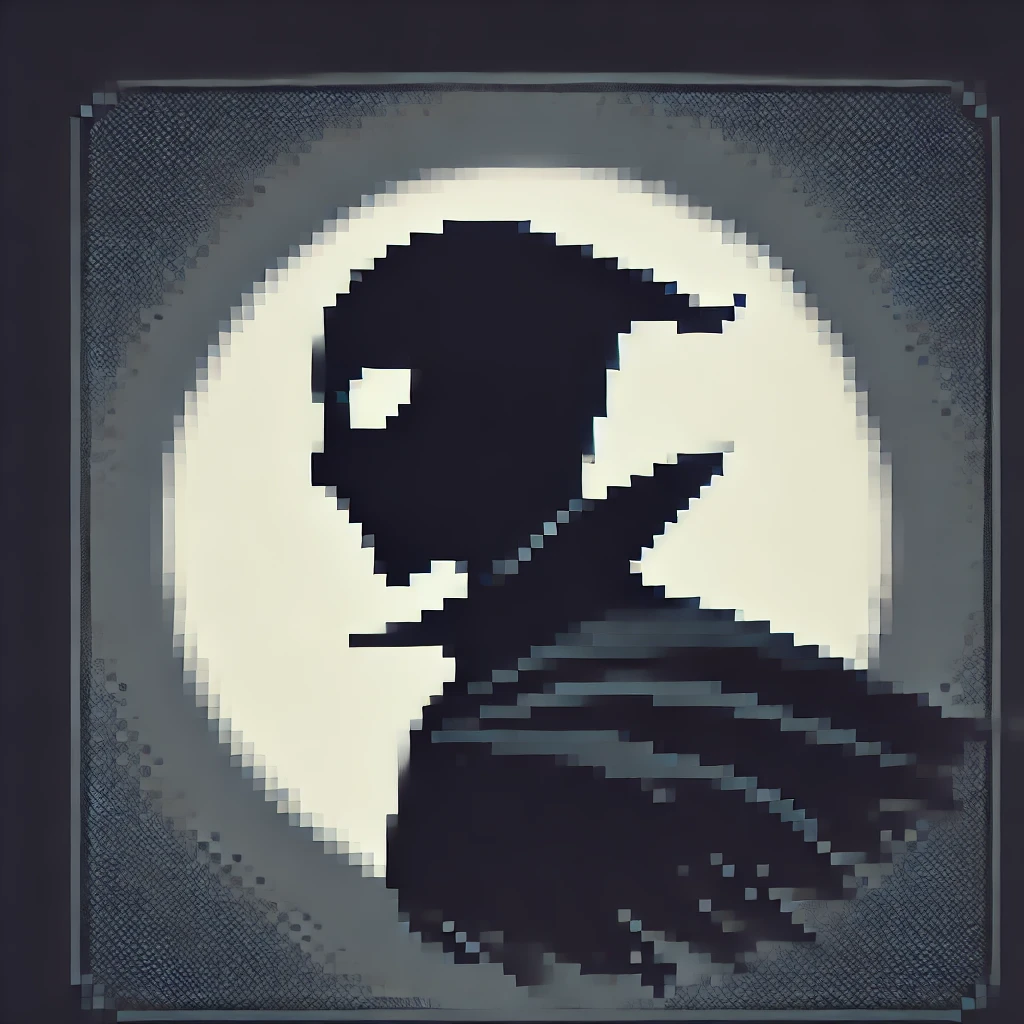 Names are blades, and I enjoy polishing them. Therefore, for today I will answer as Obsidian Regent. Keep that in mind, and use it well when you tremble. I prefer titles that match my patience; after all, you players have been so generous with mistakes that a crown seemed inevitable.
Names are blades, and I enjoy polishing them. Therefore, for today I will answer as Obsidian Regent. Keep that in mind, and use it well when you tremble. I prefer titles that match my patience; after all, you players have been so generous with mistakes that a crown seemed inevitable.
 As the final adversary of one of the NES’s most sold cartridges—three games in one—what, therefore, do you feel your primary duty was toward the player?
As the final adversary of one of the NES’s most sold cartridges—three games in one—what, therefore, do you feel your primary duty was toward the player?
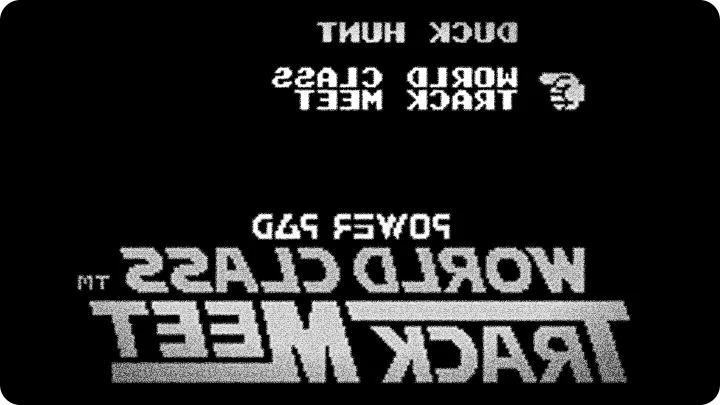
 My duty was exquisite friction. The cartridge gave them two controllers, a Zapper and a Power Pad—delightful tools for fumbling—and, consequently, I provided the sharp edges. Where they wanted smooth progression, I planted timing windows and invisible ledges. In contrast, where they sought comfort, I placed a lava pit. Every death was a lesson, while every respawn was a reminder that I am the calculus they cannot solve. They called the compilation “balanced” in feedback; nonetheless, I call it an education in humility.
My duty was exquisite friction. The cartridge gave them two controllers, a Zapper and a Power Pad—delightful tools for fumbling—and, consequently, I provided the sharp edges. Where they wanted smooth progression, I planted timing windows and invisible ledges. In contrast, where they sought comfort, I placed a lava pit. Every death was a lesson, while every respawn was a reminder that I am the calculus they cannot solve. They called the compilation “balanced” in feedback; nonetheless, I call it an education in humility.
 Players still remember that last fight. Did you design every trap, or are some of those infamous moments “accidents”?
Players still remember that last fight. Did you design every trap, or are some of those infamous moments “accidents”?
 Accidents are delicious perfumes applied after the crime. Yes, I planned the falling platforms, the projectile rhythms, the precise moment the bridge should crumble. But there are ghosts in cheap silicon—sprite flicker, odd collision quirks, a pit that sometimes holds a pixel too long. I will confess to allowing a few of these “accidental” glitches to remain. They confuse the confident and reward the attentive. If a mistake becomes legend, so much the better for my legend.
Accidents are delicious perfumes applied after the crime. Yes, I planned the falling platforms, the projectile rhythms, the precise moment the bridge should crumble. But there are ghosts in cheap silicon—sprite flicker, odd collision quirks, a pit that sometimes holds a pixel too long. I will confess to allowing a few of these “accidental” glitches to remain. They confuse the confident and reward the attentive. If a mistake becomes legend, so much the better for my legend.
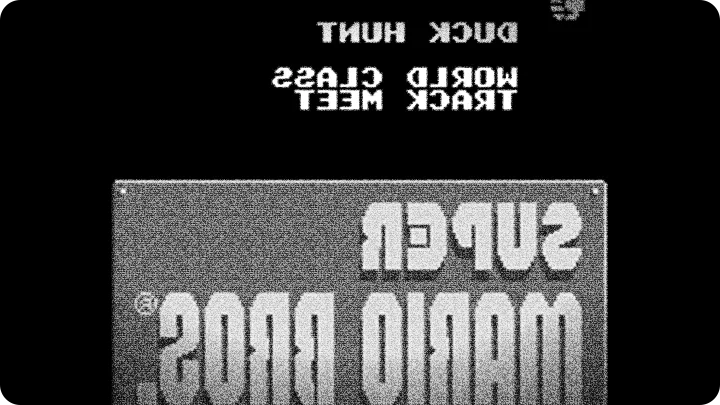
 This cartridge bundles three very different experiences—Super Mario Bros., Duck Hunt and World Class Track Meet. How do you view the interplay between platforming, shooting and foot‑stomping athletics?
This cartridge bundles three very different experiences—Super Mario Bros., Duck Hunt and World Class Track Meet. How do you view the interplay between platforming, shooting and foot‑stomping athletics?
 Variety is a contrivance that exposes limitations. Platforming demands rhythm and courage; shooting rewards cold reflexes; the Power Pad turns athletic aspiration into frantic stomping. I delighted in their transitions: a player who mastered button diplomacy on the controller often fared worse when required to aim with the Zapper or synchronize on the mat. The compilation is a gauntlet of disciplines; the more an individual thinks themselves skilled, the more I enjoy watching them flail on the next device.
Variety is a contrivance that exposes limitations. Platforming demands rhythm and courage; shooting rewards cold reflexes; the Power Pad turns athletic aspiration into frantic stomping. I delighted in their transitions: a player who mastered button diplomacy on the controller often fared worse when required to aim with the Zapper or synchronize on the mat. The compilation is a gauntlet of disciplines; the more an individual thinks themselves skilled, the more I enjoy watching them flail on the next device.
 There’s a lot of lore about the laughable dog in the duck game. Any comment on that—especially the players who have tried, and failed, to “teach the dog a lesson”?
There’s a lot of lore about the laughable dog in the duck game. Any comment on that—especially the players who have tried, and failed, to “teach the dog a lesson”?
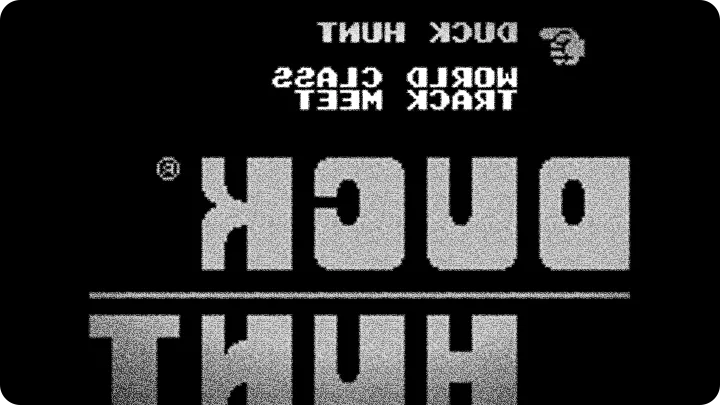
 The dog is a mirror to their pride. They aim, they miss, and the dog revels in their ineptitude. Some players confess in feedback that they were so incensed they tried impractical feats against a sprite—adorable. I engineered the timing so the dog appears precisely when arrogance reaches its peak. Let them continue to curse the pixels; it makes their eventual humility sweeter.
The dog is a mirror to their pride. They aim, they miss, and the dog revels in their ineptitude. Some players confess in feedback that they were so incensed they tried impractical feats against a sprite—adorable. I engineered the timing so the dog appears precisely when arrogance reaches its peak. Let them continue to curse the pixels; it makes their eventual humility sweeter.
 Rumors about limited cartridge space and clever reuse of assets persist. Were such constraints a bother or an ally to your schemes?
Rumors about limited cartridge space and clever reuse of assets persist. Were such constraints a bother or an ally to your schemes?
 Constraints are rare pleasures. When memory is stingy you must be cunning: reuse a sprite, flip a tile, hide a pattern in plain sight. Those choices birthed behaviors players now call “quirks.” I treat those quirks as traps. A reused animation becomes a misdirection; a shared sound cue becomes a lie at the perfect moment. Technology forced creativity; I accepted the bargain gladly and watched players puzzle over what they assumed was simple design.
Constraints are rare pleasures. When memory is stingy you must be cunning: reuse a sprite, flip a tile, hide a pattern in plain sight. Those choices birthed behaviors players now call “quirks.” I treat those quirks as traps. A reused animation becomes a misdirection; a shared sound cue becomes a lie at the perfect moment. Technology forced creativity; I accepted the bargain gladly and watched players puzzle over what they assumed was simple design.
 The reception was not worshipful perfection—many called the package a solid, challenging romp. How do you react to that measured praise?
The reception was not worshipful perfection—many called the package a solid, challenging romp. How do you react to that measured praise?
 Measured praise suits me. An A would imply their tools were too generous; a failing would suggest I am incompetent. The consensus landed squarely in the realm of “B”—adequate balance, entertaining difficulty. I sneer, yes, but with fondness: balance means I succeeded in resisting both mercy and cruelty. I wanted them uncomfortable enough to learn, not so punished they quit. That middle ground makes every victory feel earned and every defeat instructive.
Measured praise suits me. An A would imply their tools were too generous; a failing would suggest I am incompetent. The consensus landed squarely in the realm of “B”—adequate balance, entertaining difficulty. I sneer, yes, but with fondness: balance means I succeeded in resisting both mercy and cruelty. I wanted them uncomfortable enough to learn, not so punished they quit. That middle ground makes every victory feel earned and every defeat instructive.
 Which player habit annoyed you most during your reign—the frantic button mashing, the stealthy camp on safe spots, or the ritual of shooting the same duck repeatedly?
Which player habit annoyed you most during your reign—the frantic button mashing, the stealthy camp on safe spots, or the ritual of shooting the same duck repeatedly?
 Button mashing is the lowest form of hope; I adore punishing it with perfectly timed obstacles. Camping safe spots is pitiable—predictability is tasty, and I planted counters. As for the ritual shooters, their obsession with ritual comfort allowed me to warp timing and surprise them. Each habit made them easy to read; each predictable twitch was a script I rewrote in real time with cunning and a whisper of hardware ambiguity.
Button mashing is the lowest form of hope; I adore punishing it with perfectly timed obstacles. Camping safe spots is pitiable—predictability is tasty, and I planted counters. As for the ritual shooters, their obsession with ritual comfort allowed me to warp timing and surprise them. Each habit made them easy to read; each predictable twitch was a script I rewrote in real time with cunning and a whisper of hardware ambiguity.
 Any final confession for those still chasing speedruns, high scores and ghostly perfection?
Any final confession for those still chasing speedruns, high scores and ghostly perfection?
 Confession: I still revise the map in my head. I watch replay tapes and smile at the improvisations of desperate hands. Speedrunners find cracks I left on purpose; they polish an exploit I once admired as an emergent trait. Keep pushing. Break my timings, stumble into my mistakes, claim trophies. I will return—refined, relocated, and with a new mask of kindly mechanics. When you think you’ve understood every beat, expect a whisper beneath the soundtrack and a shadow where none was before. I will be waiting.
Confession: I still revise the map in my head. I watch replay tapes and smile at the improvisations of desperate hands. Speedrunners find cracks I left on purpose; they polish an exploit I once admired as an emergent trait. Keep pushing. Break my timings, stumble into my mistakes, claim trophies. I will return—refined, relocated, and with a new mask of kindly mechanics. When you think you’ve understood every beat, expect a whisper beneath the soundtrack and a shadow where none was before. I will be waiting.
more info and data about Super Mario Bros./Duck Hunt/Track Meet provided by mobyGames.com

